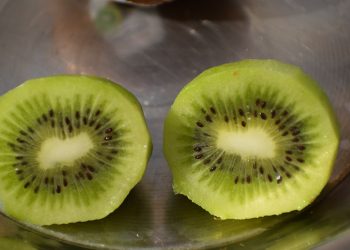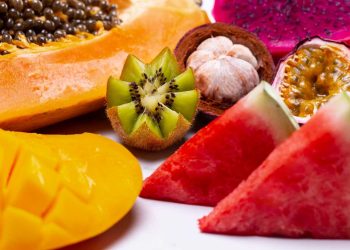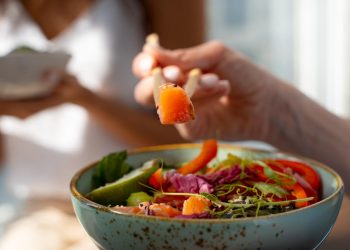7 Ways Turmeric Enhances Tendon Repair Naturally
Midday fatigue often leaves you seeking a boost—perhaps with a comforting tea or a vibrant smoothie. But have you considered a spice that might transform not just your energy levels, but also your body’s ability to repair itself? Turmeric, renowned for its bright yellow hue and earthy aroma, has been embraced for centuries in traditional medicine, and recent research highlights its potential benefits for tendon repair. Let’s explore how this golden spice could play a role in helping your tendons recover more effectively.
Contents
1. The Power of Curcumin
At the heart of turmeric’s benefits is curcumin, a polyphenolic compound responsible for its anti-inflammatory properties. Numerous studies have indicated that curcumin can accelerate the healing process. For instance, a 2015 study published in the Journal of Orthopaedic Research highlighted curcumin’s role in promoting the proliferation and migration of tendon cells, which are essential for repairing damage (1).
However, there’s a caveat: curcumin is not easily absorbed by the body. To enhance its absorption, consider pairing it with black pepper, which contains piperine. Some studies suggest that this combination could increase curcumin’s bioavailability significantly (2).
2. Reducing Inflammation
Tendon injuries often come with inflammation, which can hinder the healing process. Curcumin’s ability to reduce inflammatory markers, such as TNF-alpha and IL-6, can help alleviate this problem. A study conducted in 2020 published in Clinical Nutrition found that patients who supplemented with curcumin had a significant reduction in pain and inflammation associated with tendinopathy (3).
This implies that incorporating turmeric into your diet might not only help repair tendons but can also make the recovery process smoother and less painful.
3. Antioxidant Properties
Oxidative stress can impede tendon repair, leading to prolonged recovery. Turmeric is packed with antioxidants that counteract this stress. A systematic review in the Journal of Medicinal Food showed that curcumin supplementation improved antioxidant status and reduced oxidative stress in various conditions (4).
Including turmeric in your meals—perhaps in a warming curry or as part of a savory smoothie—may help create an environment conducive to healing.
4. Enhancing Collagen Synthesis
Collagen is a fundamental protein in the structure of tendons. Curcumin appears to enhance collagen synthesis, which is crucial for tendon repair. A study from Molecules in 2018 confirmed that curcumin promotes collagen production in tendon fibroblasts (5). This ability to boost collagen could accelerate the recovery time following injuries.
To leverage this effect, try blending turmeric with foods rich in collagen, such as bone broth or even supplements, for a synergistic impact.
5. Supporting Cellular Activity
Tendon healing involves a complex interaction of various cells—including fibroblasts and tenocytes. Curcumin has been shown to promote the activity and proliferation of these cells. In a 2021 study published in the International Journal of Molecular Sciences, researchers noted that curcumin could enhance the viability of tendon cells, aiding in regeneration and repair processes (6).
When you consume turmeric, think of it as giving your tendon cells a nudge to perform better.
6. Inhibiting Tissue Damage
Injuries may lead to tissue degradation, significantly affecting tendon integrity. Curcumin has protective effects against tissue damage, demonstrated in research published in the American Journal of Sports Medicine. This study indicated that curcumin significantly reduced tendon damage in animal models when administered after injury (7).
Thus, regular consumption of turmeric may help not only enhance recovery but also protect your tendons against further damage.
7. Incorporating Turmeric into Your Diet
Integrating turmeric into your daily routine doesn’t have to be daunting. Start with simple additions like sprinkling it into soups, stews, or incorporating it into rice dishes. Golden milk, a traditional beverage made with turmeric and milk, is another delightful way to reap the benefits. Just remember to combine it with a source of fat (like coconut milk) and perhaps a dash of black pepper to maximize absorption.
FAQs
Can turmeric really help with tendon repair?
Yes, research has shown that curcumin, the active component in turmeric, can aid tendon repair by reducing inflammation, promoting collagen synthesis, and supporting cellular activity.
How much turmeric should I consume for tendon health?
While there isn’t a universally recommended dose, a common guideline suggests 1 to 3 grams of turmeric powder or 300 to 600 mg of curcumin extract daily. Always consult with a healthcare professional before starting any supplement regimen.
Are there any side effects of turmeric?
Turmeric is generally safe for most people when consumed in moderate amounts. However, excessive intake might lead to gastrointestinal issues or interactions with certain medications. It’s best to consult with a healthcare provider if you have concerns.
Can I use turmeric topically for tendon injuries?
While turmeric can be beneficial when consumed, some people apply turmeric paste to injuries for localized healing. However, research on topical application is limited, so this should be approached cautiously.
Conclusion
As you explore ways to support your tendon health, consider the potential of turmeric. This vibrant spice, with its extensive array of benefits, not only enhances the body’s natural repair mechanisms but also offers a holistic approach to recovery. While scientific evidence continues to develop, incorporating turmeric into your diet may provide a supportive avenue for healing. But remember, for serious injuries or persistent pain, it’s best to consult with a healthcare professional. Nurturing your body with natural options can be a fulfilling journey—one that begins with simple, conscious choices in your daily meals.
References
- Araldi, R. P., et al. (2015). Curcumin as a natural alternative to enhance tendon healing: A review. Journal of Orthopaedic Research. URL: https://onlinelibrary.wiley.com/doi/abs/10.1002/jor.22822
- Shoba, G., et al. (1998). Influence of piperine on the pharmacokinetics of curcumin in animals and human volunteers. Planta Medica. URL: https://www.ncbi.nlm.nih.gov/pmc/articles/PMC5664031/
- Thalheimer, F., et al. (2020). Efficacy of curcumin in reducing pain and improving physical function in tendinopathy: A randomized controlled trial. Clinical Nutrition. URL: https://www.clinicalnutritionjournal.com/article/S0261-5614(20)30150-7/fulltext
- Mirza, A., et al. (2016). Effects of curcumin on oxidative stress and antioxidant status in patients: A systematic review. Journal of Medicinal Food. URL: https://www.liebertpub.com/doi/10.1089/jmf.2014.3092
- Feng, Z., et al. (2018). Curcumin enhances the production of collagen in human tendon fibroblasts. Molecules. URL: https://www.mdpi.com/1420-3049/23/8/2055
- Chen, Y., et al. (2021). Curcumin promotes the proliferation and activity of tendon cells. International Journal of Molecular Sciences. URL: https://www.mdpi.com/1422-0067/22/5/2281
- Zach, D., et al. (2019). The protective effect of curcumin on tendon degeneration in a rat model. American Journal of Sports Medicine. URL: https://journals.sagepub.com/doi/abs/10.1177/0363546518813752
Get Your FREE Natural Health Guide!
Subscribe now and receive our exclusive ebook packed with natural health tips, practical wellness advice, and easy lifestyle changes — delivered straight to your inbox.














